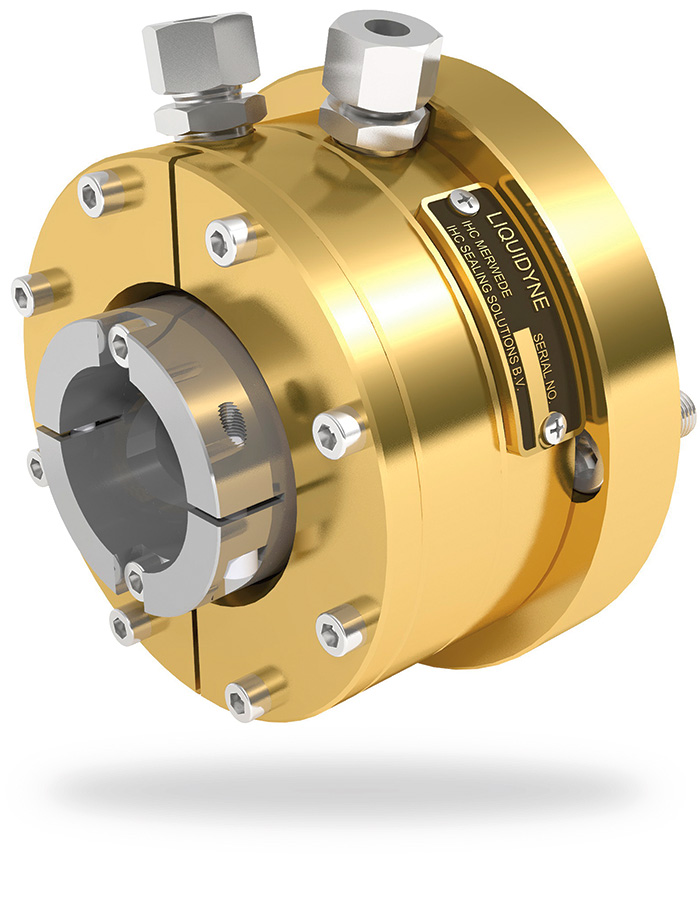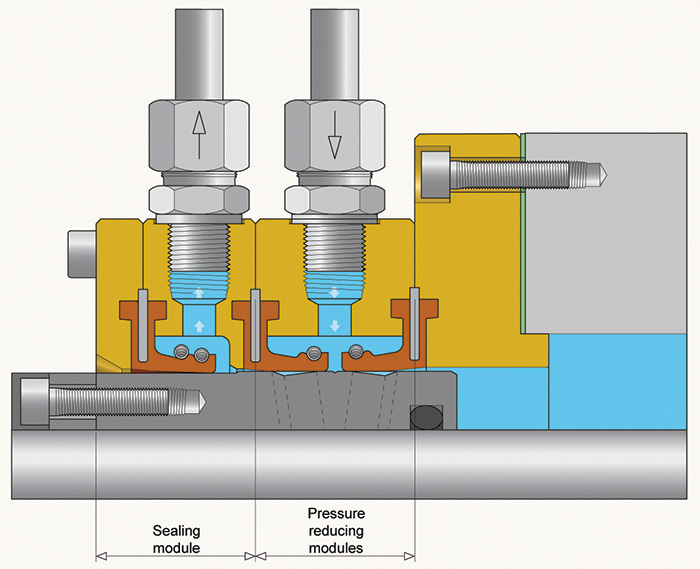Pumps & Systems, April 2013
When facilities monitor and measure their processes, they gain valuable information. However, if information is simply gathered and not analyzed and used, then it is worthless.
To get a true understanding of a facilities process, seal condition monitoring is important. This can help plan maintenance. If the seal comes equipped with the ability for self-monitoring, it is a bonus. The lip seal described in this article is equipped with this ability. This monitoring can help stretch the mean time between maintenance (MTBM) and improve the lifetime of the seal. It helps end users avoid sudden pump failure, unnecessary maintenance and effectively lowers operational costs.

Water-lubricated lip seal
Photo courtesy of IHC Sealing Solutions
Basic Functions
Initially designed for heavy-duty dredging pumps, the lip seal is a water-lubricated shaft seal. The seal is also suitable for pumps in which the stuffing box pressure can drop below atmospheric level. In addition, the design may be applied in pumps that process water that contains abrasive particles or particles bigger than 100 microns. In that case, this design is lubricated with an external flushing water supply (up to 40 bar).
This lip seal exists out of independently operating modules, each fulfilling its own function. The basic functions of the modules are:
- Sealing
- Pressure reduction

Image 1. The water-lubricated lip seal and drain flushing supply
Pressure Reducing Module
The lip seals in the pressure reducing modules run on a bush with special, helical grooves. These grooves and the peripheral velocity of the bush allow the water to flow from the flushing water supply to the drain and the stuffing box. The latter flow prevents intrusion of polluted water into the seal. This way, a hydrodynamic layer is built up that effectively lubricates the seal. The flow of the flushing water discharge serves as an indicator of the condition of the seal.
With time, the helical grooves on the bush gradually wear down. Therefore, a smaller amount of water will flow through the seal and the water discharge flow gradually decreases. A decrease in this flow indicates when maintenance should take place. When the discharge flow is at 20 percent of the initial flow, maintenance should occur. By plotting the decrease of the discharge flow, maintenance can be planned efficiently and MTBM can be optimized. The ability to monitor this flow and plan maintenance helps avoid sudden pump failure. Emergency maintenance will no longer be needed.
Case study:
Plastics Manufacturer
A European plastics manufacturer needed to increase the availability of its cooling water system and increase reliability. The plant had experienced many sealing problems. The gland packing was failing and causing numerous issues. An operator from another production facility recommended a seal company that developed a plan to solve the problem.
The seal company’s team decided to remove and replace the gland packing with a water-lubricated lip seal. This new seal arrangement improved the reliability and availability of the cooling water system. It also had a significant power consumption saving of 12.6 percent. P&S

